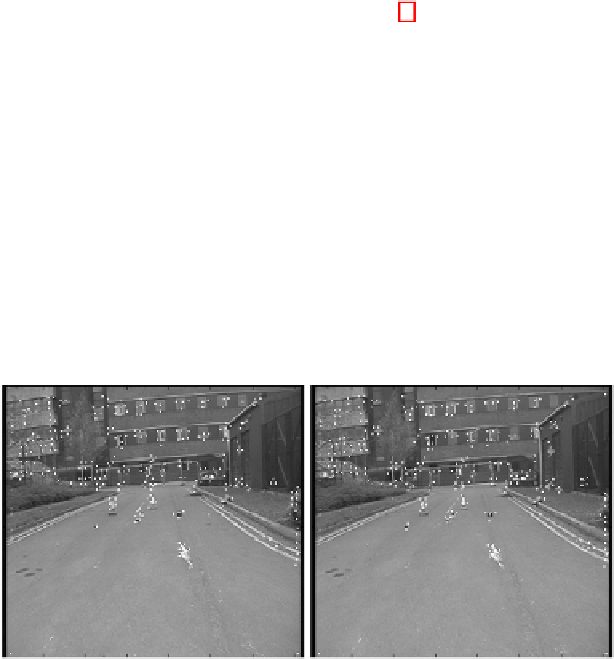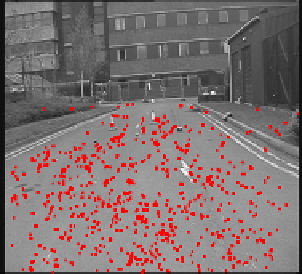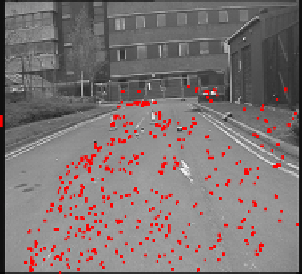Information Technology Reference
In-Depth Information
below a pre-defined threshold. Four image pairs and their corresponding disparity
maps have been obtained and illustrated in Fig. 4. The proposed algorithm has been
able to outline the actual planar areas.
We further demonstrate the performance of the proposed algorithm in planar sur-
face detection that usually is the measure of corresponding accuracy. Fig. 5 illus-
trates two neighboring image frames of a test sequence namely “campus”, superim-
posed by the detected corner features (see Fig. 5(a) and (b)). It exhibits in Fig. 5(c)
and (d) that the proposed RANSAC plane fitting scheme results in optimal outcomes
of flat surface fitting. For example, Fig. 5(c) shows that using the proposed method
we are able to correctly identify most points on the ground. Fig. 5(d) denotes a sig-
nificant number of points on the buildings have been incorrectly classified to be on
the ground plane by the classical technique. Meanwhile, the points on the ground
plane shown on Fig. 5(d) are less dense than those of Fig. 5(c), which is an issue in
the classical RANSAC method.
(a)
(b)
(c)
(d)
Fig. 5
Examples of the estimated ground plane in sequence “campus” by two different meth-
ods: (a) and (b) feature extraction, (c) outcome of the proposed method, and (d) outcome of
the classical method









